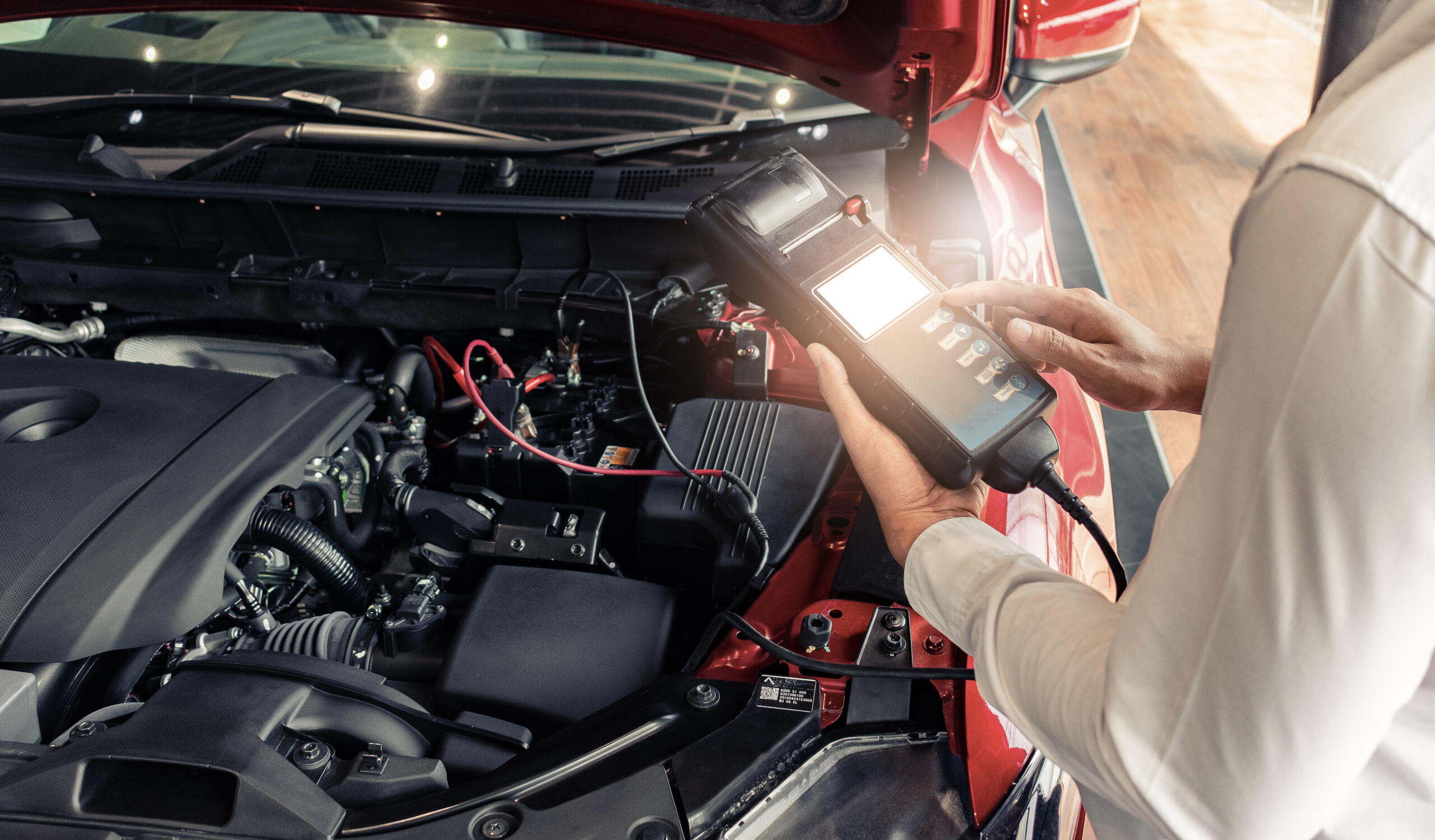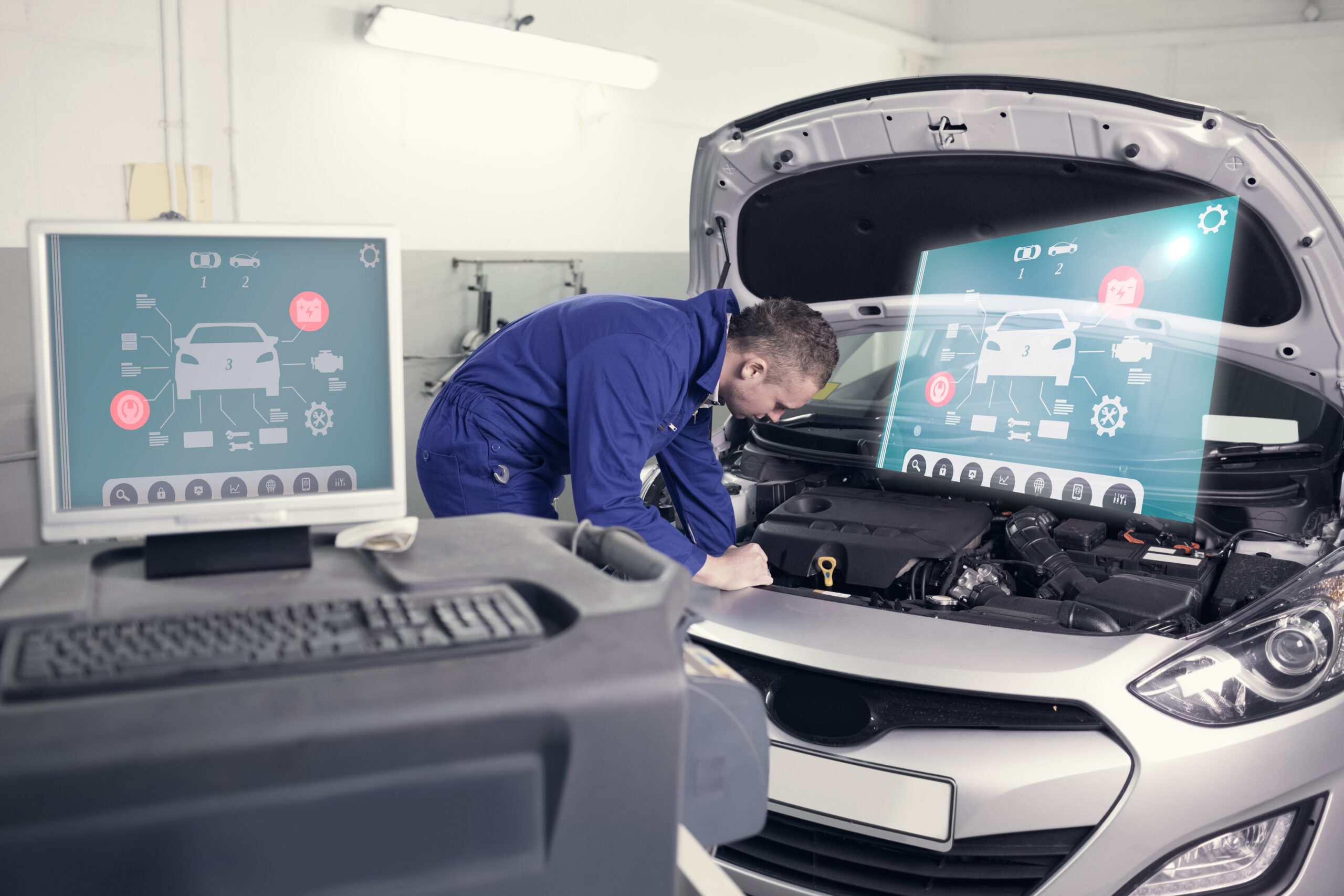The software-first evolution in automotive
The automotive industry is experiencing a fundamental shift as vehicles transform from primarily mechanical systems to software-defined platforms. Modern vehicles now function as complex computing systems on wheels, integrating advanced driver assistance systems (ADAS), sophisticated infotainment interfaces, and numerous interconnected components that create unprecedented testing challenges. Traditional testing approaches, designed for predominantly mechanical systems, are proving insufficient for validating the complex interactions between software, hardware, and AI-driven systems that characterize modern vehicles.
The modern testing challenge

The IEEE Vehicular Technology Society’s 2024 study reveals a critical gap: conventional testing methods cover only 40% of possible scenarios in advanced driver assistance systems (ADAS). This limitation stems from several key factors:
- Software complexity
According to McKinsey’s 2024 Global Software Excellence Survey, modern luxury vehicles now contain more than 150 million lines of code—a complexity that surpasses that of commercial aircraft and space vehicles. This unprecedented software sophistication has created testing challenges that traditional methodologies can no longer adequately address. - Integration challenges
Modern vehicles function as complex computing systems on wheels, integrating ADAS, sophisticated infotainment interfaces, and numerous interconnected components. Multiple electronic control units (ECUs) must work in perfect harmony, while sensors and actuators need to respond accurately in real time. The challenge extends beyond individual components to their collective behavior and interactions.The integration of artificial intelligence in critical vehicle systems further compounds these challenges. AI-powered features, from adaptive cruise control to emergency braking systems, require advanced testing approaches that can validate both deterministic and probabilistic behaviors. Traditional testing methodologies, designed for mechanical systems and basic electronics, struggle to address these new requirements effectively. - Safety-critical nature
Unlike consumer electronics, where software bugs might cause inconvenience, automotive software failures can have severe safety implications. This reality, combined with evolving regulatory requirements for autonomous and semi-autonomous features, demands more rigorous validation approaches.
The business case for GenAI-powered testing

Generative AI has already transformed earlier stages of the automotive product development lifecycle by optimizing design processes and reducing prototype iterations by up to 35%. Leading manufacturers are leveraging it for predictive component failure analysis and streamlined supply chain management, creating substantial cost efficiencies before products reach testing phases. Recent studies published in the International Journal of Automotive Technology provide compelling evidence of GenAI’s impact on testing efficiency and effectiveness. A deeper analysis of implementations across major automotive manufacturers reveals significant performance improvements in several key areas:
- Testing speed and efficiency: Organizations implementing GenAI-powered testing systems have reported a 43% reduction in overall test cycle time. This improvement stems from automated test case generation and parallel execution capabilities, allowing manufacturers to validate complex systems more rapidly than ever before.
- Quality and coverage metrics: Perhaps most significantly, using GenAI techniques for testing has demonstrated a 65% increase in defect detection rates during early development stages. This early detection translates directly to cost savings, with studies showing an average reduction of 72% in the cost of fixing defects compared to traditional testing methods, where issues are often discovered later in the development cycle.
- Resource optimization: The implementation of GenAI testing solutions has led to a 38% reduction in human testing hours while simultaneously increasing test coverage by 50%. This efficiency gain allows organizations to reallocate skilled testing professionals to more strategic tasks requiring human insight and creativity.
GenAI as a testing solution
GenAI is revolutionizing automotive testing through several transformative capabilities:
- Automated test case generationGenAI systems excel at analyzing complex requirements and automatically generating exhaustive test scenarios. These systems can process vast amounts of documentation and historical data to create test cases that cover both common usage patterns and edge cases. This capability is particularly valuable for testing ADAS and autonomous driving features, where the number of possible scenarios is virtually unlimited.
The technology can generate test cases that account for various environmental conditions, user behaviors, and system states. This holistic approach helps ensure thorough testing coverage while reducing the time and effort required for test case creation.
- Predictive testingGenAI can predict potential failure points and generate targeted test cases by analyzing patterns in historical test data and system behavior. This predictive capability enables proactive testing focused on areas of highest risk, improving the efficiency and effectiveness of testing processes.
The system can identify subtle patterns that might indicate potential issues, allowing teams to address problems before they manifest in production vehicles. This predictive approach helps reduce development costs and improve overall product quality.
- Virtual validationGenAI enables sophisticated simulation environments that can subject vehicles to millions of miles of virtual testing. These environments can simulate diverse scenarios and conditions that would be impractical or impossible to test in the real world.
Virtual validation powered by GenAI can create realistic scenarios that test vehicle systems under extreme conditions, rare events, and complex interactions. This capability is particularly valuable for validating autonomous driving systems, where extensive testing is required to ensure safety and reliability.
- Test data generation
GenAI significantly accelerates testing processes by synthesizing realistic and diverse test data that mimics actual vehicle sensor inputs, user interactions, and environmental conditions. This capability eliminates the traditional bottlenecks associated with data collection and preparation, allowing teams to test complex scenarios without extensive field recordings or manual data creation. - Test report generation
GenAI transforms test reporting by automatically analyzing test results and producing comprehensive, insightful reports that highlight critical issues, identify patterns, and suggest prioritized actions. These intelligent reports drastically reduce the time engineers spend interpreting test outcomes while providing deeper insights into system performance and potential vulnerabilities that might otherwise go unnoticed in traditional manual reporting workflows.
Real-world implementation success
The transformation of automotive testing through GenAI is best illustrated through several documented research cases published in peer-reviewed journals:
- ADAS validation
A 2024 study published in the SAE International Journal of Connected and Automated Vehicles examined the implementation of GenAI testing for ADAS validation. The research, conducted across multiple vehicle programs, demonstrated how GenAI-powered testing identified 47% more edge cases than traditional testing methods. More importantly, the system detected potential safety-critical scenarios that conventional testing approaches had missed entirely. - Electric vehicle battery management systems
Research published in the Journal of Power Sources (2024) documented the application of GenAI testing to electric vehicle battery management systems. The study showed how GenAI-driven testing protocols could simulate tens of thousands of charging and usage scenarios in virtual environments, identifying potential failure modes that would have required years of real-world testing to discover. This approach resulted in a 56% reduction in physical testing requirements while improving overall system reliability by 34%. - Integrated vehicle electronics testing
A thorough study in the IEEE Transactions on Vehicular Technology detailed how GenAI testing transformed the validation of integrated vehicle electronics systems. The research demonstrated a 61% improvement in testing efficiency for complex electronic control unit (ECU) interactions, while simultaneously reducing false positive rates by 83%. This improvement in testing accuracy directly translated to a 42% reduction in post-release software updates.
Implementation framework
Successfully implementing GenAI in automotive testing requires a structured approach:
- Assessment and planningOrganizations must begin by thoroughly evaluating their existing testing processes and infrastructure. This includes assessing current testing methodologies, identifying areas where GenAI can provide immediate value, and evaluating data quality and availability.
The planning phase should include defining clear objectives, establishing success metrics, and developing a roadmap for implementation. Organizations must also consider the training and resources required to support the transition to GenAI-powered testing.
- Pilot implementationStarting with focused pilot projects allows organizations to validate benefits and address challenges in a controlled environment. These pilots should target specific testing areas where GenAI can demonstrate clear value while minimizing disruption to existing processes.
Pilot projects provide opportunities to build internal expertise, refine implementation approaches, and demonstrate value to stakeholders. Success in pilot projects builds confidence and support for broader implementation.
- Scaled deploymentA methodical expansion of GenAI testing capabilities ensures sustainable transformation while maintaining testing integrity. Organizations should prioritize areas for expansion based on potential impact and readiness for implementation.
Scaled deployment requires ongoing monitoring and optimization of GenAI testing processes. Organizations must establish feedback mechanisms to continuously improve testing effectiveness and efficiency.
Regulatory compliance and safety assurance
The regulatory landscape for automotive testing continues to evolve, with new requirements emerging from global authorities. The United Nations Economic Commission for Europe (UNECE) Regulation 155 mandates extensive cybersecurity testing and validation, while the European Union’s General Safety Regulation Phase 2 establishes stringent requirements for advanced safety systems testing.
GenAI testing systems have proven particularly effective in addressing these regulatory requirements. Research published in the International Journal of Automotive Technology demonstrates that GenAI-powered testing can achieve 94% coverage of regulatory test cases compared to 71% with traditional methods. This improved coverage provides manufacturers with greater confidence in regulatory compliance while reducing validation time and costs.
Future outlook and industry implications
The integration of GenAI with emerging technologies promises even more sophisticated testing capabilities:
- Edge computing integration
The integration of edge computing with GenAI testing systems will enable real-time validation of vehicle responses. This capability will become increasingly important as vehicles become more autonomous and connected.Edge computing will allow for more sophisticated on-vehicle testing and validation, ensuring systems perform effectively under real-world conditions. - Convergence with digital twinThe convergence of digital twins and GenAI will create wide-ranging testing environments where physical components have digital counterparts. These environments will enable continuous validation and optimization of vehicle systems.
Digital twins powered by GenAI will provide new capabilities for predictive maintenance and system optimization, improving vehicle reliability and performance.
- Quantum computing potential
As quantum computing technology matures, its integration with GenAI could revolutionize testing capabilities. Quantum-enhanced GenAI could enable more sophisticated simulation and validation approaches, potentially transforming how we test complex vehicle systems.
Looking ahead, the automotive industry’s testing requirements will only grow more complex. The integration of advanced AI systems, autonomous driving capabilities, and connected vehicle features demands ever more sophisticated testing approaches. Industry analysis projects that by 2026, software testing will account for up to 35% of total vehicle development costs, making efficient and effective testing methodologies a critical competitive differentiator.
Recent research from the World Economic Forum’s Automotive Technology Initiative suggests that manufacturers who successfully implement GenAI testing systems could reduce their time-to-market by up to 40% while simultaneously improving product quality and safety metrics. This competitive advantage becomes particularly significant as the industry continues its rapid evolution toward software-defined vehicles.
A strategic imperative
The evidence is clear: GenAI testing represents not just an evolutionary step in automotive development but a revolutionary transformation in how we approach vehicle validation and quality assurance. For industry leaders, the question is no longer whether to adopt GenAI testing, but how quickly and effectively can they implement these technologies to maintain competitive advantage in an increasingly software-driven industry.
The documented performance improvements, compelling case studies, and clear regulatory advantages make GenAI testing a strategic imperative for automotive manufacturers. Those who successfully implement these advanced testing methodologies will be better positioned to deliver the innovative, safe, and reliable vehicles that tomorrow’s market demands.
- McKinsey & Company. “Global Software Excellence Survey 2024
- World Economic Forum. “Automotive Technology Report 2024
- IEEE Transactions on Software Engineering, Vol. 50, No. 2, 2024
- UNECE. Regulation No. 155 – Cyber security and cyber security management system
- European Commission. General Safety Regulation Phase 2 Technical Requirements
- NHTSA – ADS Safety Framework 2024
- Journal of Automotive Engineering, Vol. 15, 2025
- Proceedings of IEEE ICST 2024
- SAE International Journal of Connected and Automated Vehicles, 2024
- ISO/IEC 25010:2024
- SEI Technical Report – AI Implementation in Safety-Critical Systems
- ASTA – GenAI Testing Implementation Guide 2024
- International Journal of Automotive Technology, Vol. 25, 2024
- Gartner – Automotive Technology Forecast 2024
- IEEE Future Directions in Automotive Computing, 2025


